5.6: Like My Reflection
- Page ID
- 2379
\( \newcommand{\vecs}[1]{\overset { \scriptstyle \rightharpoonup} {\mathbf{#1}} } \)
\( \newcommand{\vecd}[1]{\overset{-\!-\!\rightharpoonup}{\vphantom{a}\smash {#1}}} \)
\( \newcommand{\id}{\mathrm{id}}\) \( \newcommand{\Span}{\mathrm{span}}\)
( \newcommand{\kernel}{\mathrm{null}\,}\) \( \newcommand{\range}{\mathrm{range}\,}\)
\( \newcommand{\RealPart}{\mathrm{Re}}\) \( \newcommand{\ImaginaryPart}{\mathrm{Im}}\)
\( \newcommand{\Argument}{\mathrm{Arg}}\) \( \newcommand{\norm}[1]{\| #1 \|}\)
\( \newcommand{\inner}[2]{\langle #1, #2 \rangle}\)
\( \newcommand{\Span}{\mathrm{span}}\)
\( \newcommand{\id}{\mathrm{id}}\)
\( \newcommand{\Span}{\mathrm{span}}\)
\( \newcommand{\kernel}{\mathrm{null}\,}\)
\( \newcommand{\range}{\mathrm{range}\,}\)
\( \newcommand{\RealPart}{\mathrm{Re}}\)
\( \newcommand{\ImaginaryPart}{\mathrm{Im}}\)
\( \newcommand{\Argument}{\mathrm{Arg}}\)
\( \newcommand{\norm}[1]{\| #1 \|}\)
\( \newcommand{\inner}[2]{\langle #1, #2 \rangle}\)
\( \newcommand{\Span}{\mathrm{span}}\) \( \newcommand{\AA}{\unicode[.8,0]{x212B}}\)
\( \newcommand{\vectorA}[1]{\vec{#1}} % arrow\)
\( \newcommand{\vectorAt}[1]{\vec{\text{#1}}} % arrow\)
\( \newcommand{\vectorB}[1]{\overset { \scriptstyle \rightharpoonup} {\mathbf{#1}} } \)
\( \newcommand{\vectorC}[1]{\textbf{#1}} \)
\( \newcommand{\vectorD}[1]{\overrightarrow{#1}} \)
\( \newcommand{\vectorDt}[1]{\overrightarrow{\text{#1}}} \)
\( \newcommand{\vectE}[1]{\overset{-\!-\!\rightharpoonup}{\vphantom{a}\smash{\mathbf {#1}}}} \)
\( \newcommand{\vecs}[1]{\overset { \scriptstyle \rightharpoonup} {\mathbf{#1}} } \)
\( \newcommand{\vecd}[1]{\overset{-\!-\!\rightharpoonup}{\vphantom{a}\smash {#1}}} \)
\(\newcommand{\avec}{\mathbf a}\) \(\newcommand{\bvec}{\mathbf b}\) \(\newcommand{\cvec}{\mathbf c}\) \(\newcommand{\dvec}{\mathbf d}\) \(\newcommand{\dtil}{\widetilde{\mathbf d}}\) \(\newcommand{\evec}{\mathbf e}\) \(\newcommand{\fvec}{\mathbf f}\) \(\newcommand{\nvec}{\mathbf n}\) \(\newcommand{\pvec}{\mathbf p}\) \(\newcommand{\qvec}{\mathbf q}\) \(\newcommand{\svec}{\mathbf s}\) \(\newcommand{\tvec}{\mathbf t}\) \(\newcommand{\uvec}{\mathbf u}\) \(\newcommand{\vvec}{\mathbf v}\) \(\newcommand{\wvec}{\mathbf w}\) \(\newcommand{\xvec}{\mathbf x}\) \(\newcommand{\yvec}{\mathbf y}\) \(\newcommand{\zvec}{\mathbf z}\) \(\newcommand{\rvec}{\mathbf r}\) \(\newcommand{\mvec}{\mathbf m}\) \(\newcommand{\zerovec}{\mathbf 0}\) \(\newcommand{\onevec}{\mathbf 1}\) \(\newcommand{\real}{\mathbb R}\) \(\newcommand{\twovec}[2]{\left[\begin{array}{r}#1 \\ #2 \end{array}\right]}\) \(\newcommand{\ctwovec}[2]{\left[\begin{array}{c}#1 \\ #2 \end{array}\right]}\) \(\newcommand{\threevec}[3]{\left[\begin{array}{r}#1 \\ #2 \\ #3 \end{array}\right]}\) \(\newcommand{\cthreevec}[3]{\left[\begin{array}{c}#1 \\ #2 \\ #3 \end{array}\right]}\) \(\newcommand{\fourvec}[4]{\left[\begin{array}{r}#1 \\ #2 \\ #3 \\ #4 \end{array}\right]}\) \(\newcommand{\cfourvec}[4]{\left[\begin{array}{c}#1 \\ #2 \\ #3 \\ #4 \end{array}\right]}\) \(\newcommand{\fivevec}[5]{\left[\begin{array}{r}#1 \\ #2 \\ #3 \\ #4 \\ #5 \\ \end{array}\right]}\) \(\newcommand{\cfivevec}[5]{\left[\begin{array}{c}#1 \\ #2 \\ #3 \\ #4 \\ #5 \\ \end{array}\right]}\) \(\newcommand{\mattwo}[4]{\left[\begin{array}{rr}#1 \amp #2 \\ #3 \amp #4 \\ \end{array}\right]}\) \(\newcommand{\laspan}[1]{\text{Span}\{#1\}}\) \(\newcommand{\bcal}{\cal B}\) \(\newcommand{\ccal}{\cal C}\) \(\newcommand{\scal}{\cal S}\) \(\newcommand{\wcal}{\cal W}\) \(\newcommand{\ecal}{\cal E}\) \(\newcommand{\coords}[2]{\left\{#1\right\}_{#2}}\) \(\newcommand{\gray}[1]{\color{gray}{#1}}\) \(\newcommand{\lgray}[1]{\color{lightgray}{#1}}\) \(\newcommand{\rank}{\operatorname{rank}}\) \(\newcommand{\row}{\text{Row}}\) \(\newcommand{\col}{\text{Col}}\) \(\renewcommand{\row}{\text{Row}}\) \(\newcommand{\nul}{\text{Nul}}\) \(\newcommand{\var}{\text{Var}}\) \(\newcommand{\corr}{\text{corr}}\) \(\newcommand{\len}[1]{\left|#1\right|}\) \(\newcommand{\bbar}{\overline{\bvec}}\) \(\newcommand{\bhat}{\widehat{\bvec}}\) \(\newcommand{\bperp}{\bvec^\perp}\) \(\newcommand{\xhat}{\widehat{\xvec}}\) \(\newcommand{\vhat}{\widehat{\vvec}}\) \(\newcommand{\uhat}{\widehat{\uvec}}\) \(\newcommand{\what}{\widehat{\wvec}}\) \(\newcommand{\Sighat}{\widehat{\Sigma}}\) \(\newcommand{\lt}{<}\) \(\newcommand{\gt}{>}\) \(\newcommand{\amp}{&}\) \(\definecolor{fillinmathshade}{gray}{0.9}\)Facilitator Note: Facilitators do not need training in mental health education to facilitate this lesson. This lesson is not focused on mental illness but rather a resilience and positive psychology. This lesson introduces what eating disorders are but intentionally does not cover the symptoms of eating disorders because it is not recommended [Yager, 2007]. If participants try to discuss or ask questions about mental illness, please refer them to mental health professionals.
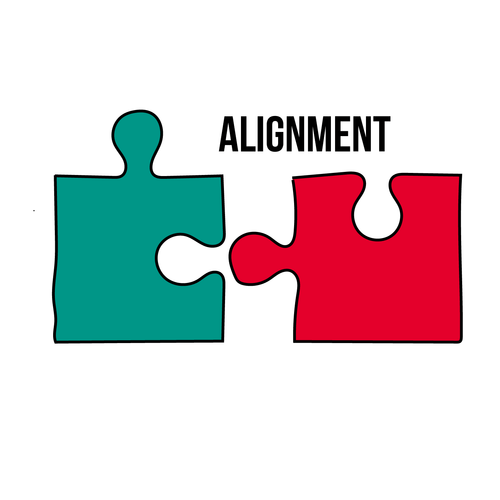
National Health Education Standards [NHES]
- 1.12.1 Predict how healthy behaviors, such as developing or maintaining positive self-esteem, can affect health status.
- 3.12.2 Use a variety of resources from home, school, and community that provide valid health information about body image and eating disorders.
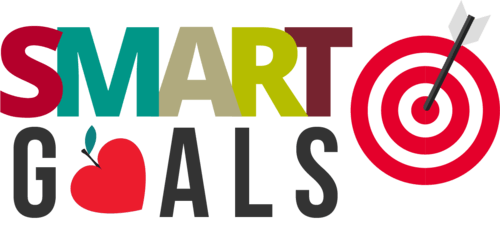
- Instruction: In a group or think-pair-share format, have participants discuss the following questions. Acknowledge those who have progressed toward their goal(s) and encourage anyone who wants to change or modify their goal to get 1:1 support.
- Share: Let’s discuss our SMART Goals.
- How is it going with your current SMART goal?
- What are some ways you can improve progress towards your goal? (Grows)
- What are some ways you are doing well with progress towards your goal? (Glows)
GUIDELINE: Decrease Negative Perception of Challenges
- Share: What guideline do you think is related to today’s lesson? Who has a SMART Goal related to this guideline?
- Instruction: Select one activity.
- Guideline Popcorn: The group lists all 8 guidelines rapidly in popcorn format.
- Guideline Charades: Divide participants into groups and assign each a guideline. Each group has to silently act out the guideline for the rest to guess.
- Two Truths and One Lie:
- Truth 1: Self-esteem affects almost every aspect of your life.
- Truth 2: The average American encounters about 3,000 ads a day and spends a total of two years watching TV commercials in their lifetime.
- Lie: Dieting is the same as having an eating disorder
- Questions to discuss and/or journal:
- How do commercials and magazine ads make you feel?
- How do you feel about the shape and size of your body?
- What are some positive thoughts you have about your shape or size?
- Do you ever have negative thoughts about your shape or size?
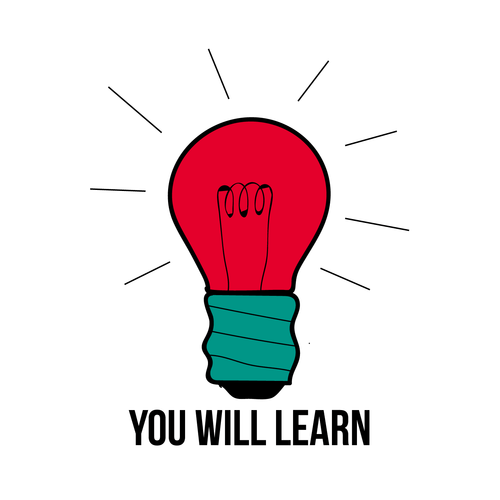
- What is self-esteem and body image and how to find support if you need help.
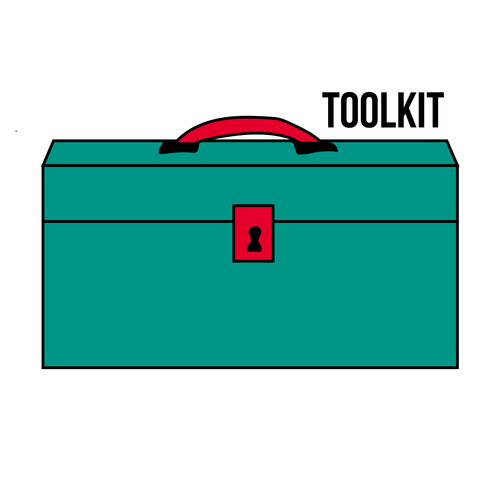
- Worksheets
- Slide presentation
- Optical Illusion Handout
- Magazines (preferably ones that participants are likely to read)
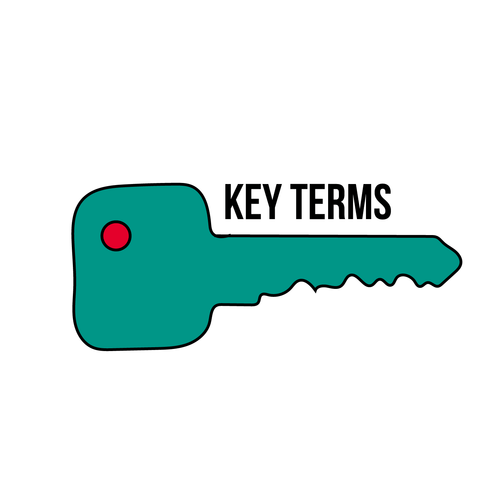
[As defined by Mclure et al., 2010; Merriam-Webster Learner’s Dictionary, n.d.; NIH, 2016; NEDA, n.d.]
- Self-esteem: Evaluations persons make about themselves that expresses a self-judgment of approval, disapproval, and personal worth.
- Evaluate: Determine the significance or worth of something.
- Benefit: A good or helpful result or effect.
- Barrier: A problem that makes something difficult or impossible.
- Body Image: How you see yourself when you look in the mirror or when you picture yourself in your mind. Body image also includes how you feel about your shape.
- Perception: The way you think about or understand someone or something.
- Idealize: To think of or represent someone or something as being perfect.
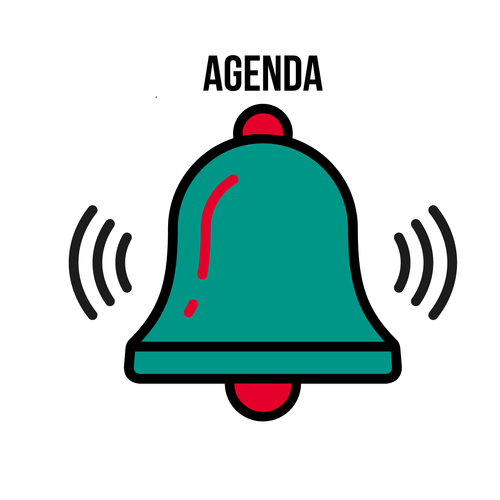
- Do Now
- My Relationship with My Body
- More Than Meets the Eye
- Reshape My Body Image
- Exit Ticket
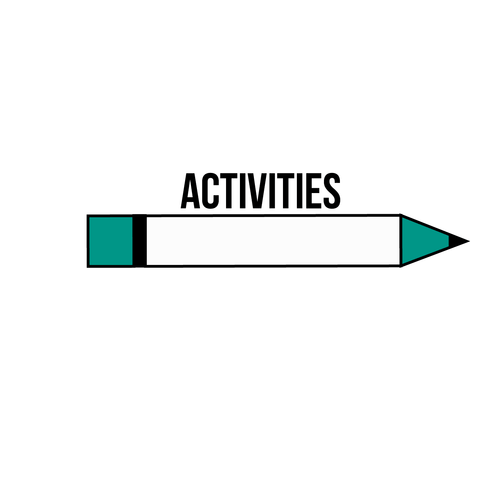
Do Now:
- Instruction:
- Have participants answer the following question on their worksheet or by sharing out loud.
- What are some signs of healthy self-esteem?
- Confidence
- Optimism
- Self-care
- Ability to cope in a healthy way with negative emotions
- Awareness of personal strengths
- Ability to accept mistakes and learn from them [US Davis Health, n.d.]
- What are some signs of low self-esteem?
- Fear of being humiliated, betrayed, or rejected
- The negative view of life
- Focus on only the negatives
- The belief that you are unworthy
- Inability to accept or move on from mistakes
- Fear of trying new things
- Extreme dependence on others [US Davis Health, n.d.]
- Share:
- What is self-esteem? Self-esteem is generally thought of as the evaluations persons make about themselves that expresses a self-judgment of approval, disapproval, and personal worth [Mclure et al., 2010].
- When you have healthy self-esteem, you feel more balanced and confident. You believe in yourself! Yet, you are also realistic and recognize that you have both strengths and your weaknesses.
Good to Know: My Relationship with My Body
- Share:
- At different points in your life, your self-esteem can change. For example, a challenge you are struggling to overcome can take a hit on your self-esteem.
- Let’s evaluate the benefits and barriers to positive self-esteem. Evaluate means to determine the significance or worth of something. The benefit is a good or helpful result or effect. The barrier is a problem that makes something difficult or impossible.
|
Benefits |
Barriers |
|
Positive thinking, confidence, and resilience |
Perfectionist attitude |
|
Healthier relationships |
Negative self-talk |
|
Improvements in academic and work performance |
Outside influences (media, etc.) |
|
Self-growth (learning from mistakes) |
Challenges or adversities in your life |
Sources:
- Giunta, LD, et al. (2013). The determinants of scholastic achievement: The contribution of personality traits, self-esteem, and academic self-efficacy. Learning and Individual Differences 27: 102-8.
- The Nemours Foundation. (2015). Body image and self-esteem. Retrieved From: http://kidshealth.org/en/teens/body-image.html#
- As you can see, it is important to try and maintain positive self-esteem for your mental and physical health and all the other benefits we brainstormed above.
- Self-esteem is also closely related to body image.
- Share:
- What is body image? Body image is how you see yourself when you look in the mirror or when you picture yourself in your mind. Body image also includes how you feel about your shape [NEDA, 2018].
- These days, negative body image is a common issue. However, having healthy self-esteem and body image is very important because feeling good about yourself can affect your mental health and your behavior [Nemours, 2015].
- When you have a positive body image, you feel comfortable and confident in your body.
Real World Relevance: More than Meets the Eye
- Share:
- Perception affects how you view the world around you, the people you interact with and yourself. Perception is the way you think about or understand someone or something.
- However, there is more than one way to look at something.
- Today, we will be viewing some optical illusions to introduce the idea of multiple perspectives.
- Instruction:
- Divide participants into groups of four (4) to six (6).
- Pass out the Optical Illusions Handout.
- Have each group go through the illusions and compare what they see.
- After every group has seen all the illusions, discuss the following questions:
- Why do we see each experience different perceptions of the same image?
- We actually see the same image, but our brain interprets the image differently. Our brains are influenced by factors such as different experiences, focuses, etc.
- If you were able to see different perceptions of the same image, what allowed you to see the optical illusion differently?
- Discussing with group members
- Looking at it from a different angle
- Taking time to examine it more carefully
- Closing your eyes and then coming back to the image
- Can you name an experience or person that turned out different from your first impression? What allowed you to see the situation differently?
- Discussing with friends/family
- Looking at it from a different perspective
- Taking a break and then coming back to the situation/person
- Taking time to examine the situation more carefully
- Thinking about the situation/person when calmer
- Share:
- Similar to the optical illusions, our perspectives can influence our perception of things in our daily lives. However, as we just saw, perceptions can be changed.
- Therefore, it’s important to explore a situation or get to know someone better before making judgments. Similarly, it is important to understand the influences that may shape your perception.
Hands-On: Reshape My Body Image
- Share:
- There are many influences that may shape your perception of your body image. We will be discussing these influences in this activity.
- Instruction:
- Divide participants into groups of four (4) to six (6).
- Hand each group a popular magazine that their age group is likely to read. Have each group select one (1) to two (2) advertisements in the magazine that have people (ideally multiple) in it.
- After about five (5) to ten (10) minutes, discuss the following questions as an entire group:
- How do the models look in the advertisements? Do they have different body shapes and sizes?
- What body shapes are shown positively? Which are shown negatively?
- Compared to people you see in your day-to-day life, do you think most people have bodies that look like the models in the ad?
- What messages do you think advertisements send about body image?
- Being slim is normal/average.
- If you want to be happy and feel good about yourself, you need to be thin.
- There is an ideal body type that everyone should strive towards.
- How do you feel about those messages? Do you think they’re true? Why or why not?
- Of course not! There is no such thing as a single ideal body type.
- Share:
- Did you know the average American encounters about 3,000 ads a day and spends a total of two years watching TV commercials in their lifetime [Roeder, 2015]? When you listen to the radio, you hear commercials. When you drive, you see bulletins. It’s no surprise that this number is so high!
- Although we often think we can ignore these ads, some messages still affect us subconsciously, and some of these messages can be harmful [Roeder, 2015]. For example, many ads have idealized the image of the human body as tall and slim. Sometimes, the models in the ads are even digitally altered to fit this ideal.
- However, it is not healthy to compare yourself to these models because they are What does idealized mean? It means to think of or represent someone or something as being perfect.
- But nobody is perfect! Instead of striving towards perfection, we should be striving towards being healthy.
- Instruction:
- As a group, list other influences on body image and self-esteem. Responses may include [Nemours, 2015]:
- Other forms of media (TV shows, movies, etc.)
- Peers
- Social media
- Celebrities
- Changes to your body (like puberty)
- Challenges at work, school, home, or in personal life (such as losing a friend)
- As a group, list other influences on body image and self-esteem. Responses may include [Nemours, 2015]:
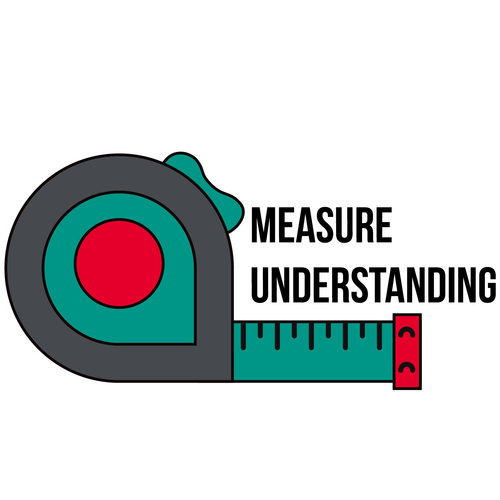
Exit Ticket:
- Set-Up:
- Make sure to have enough time for participants to share answers and share out any below tips that are not covered by participants.
- Instruction:
- Have participants write on their worksheet or share out loud the following question(s). Record participants’ answers on the board, projector, or flipchart.
- What are ways to improve self-esteem and build a more positive body image?
- Responses may include things like these and others listed on the National Eating Disorder Association website (NEDA, n.d.) www.nationaleatingdisorders.org/what:
- Celebrate the things you like doing such as dancing, playing sports, painting, writing a poem, math, science, coding, playing chess, etc.
- Keeping a journal of the things you like about your day and any positive interactions with people. Write down the things you are good at and look at the list every day.
- Remember that beauty is about who you are and not what you look like.
- Hang out with positive people who have positive attitudes.
- Have your own style --wear clothes that are comfortable and that make you feel good about your body.
- Don't pay attention to advertisements that only show perfect looking people that are airbrushed or show photographs of people that have been manipulated to look a certain way.
- Have participants write on their worksheet or share out loud the following question(s). Record participants’ answers on the board, projector, or flipchart.
Bibliography
- Giunta, LD, et al. (2013). The determinants of scholastic achievement: The contribution of personality traits, self-esteem, and academic self-efficacy. Learning and Individual Differences 27: 102-8.
- Greater Good in Action. (n.d.). Active listening. Retrieved From: http://ggia.berkeley.edu/practice/active_listening#
- McClure AC, Tanski SE, Kingsbury J, Gerrard M, Sargent JD. (2010). Characteristics Associated with Low Self-esteem among U.S. Adolescents. Academic Pediatrics 10(4): 238-44.
- Merriam-Webster Learner’s Dictionary. (n.d.). Idealize. Retrieved From: http://www.learnersdictionary.com/definition/idealize
- Merriam-Webster Learner’s Dictionary. (n.d.). Barrier. Retrieved From: http://www.learnersdictionary.com/definition/barrier
- Merriam-Webster Learner’s Dictionary. (n.d.). Benefit. Retrieved From: http://www.learnersdictionary.com/definition/benefit
- National Eating Disorder Association. (n.d.). Body Image. Retrieved from: https://www.nationaleatingdisorders.org/body-image-0
- National Institute of Mental Health. (2016). Eating disorder. Retrieved From: https://www.nimh.nih.gov/health/topi...ml#part_145410
- National Eating Disorder Association. (n.d.). What should I say? Retrieved From: https://www.nationaleatingdisorders.org/what-should-i-say
- The Nemours Foundation. (2015). Body image and self-esteem. Retrieved From: http://kidshealth.org/en/teens/body-image.html#
- Roeder, A. (2015). Advertising’s toxic effect on eating and body image. Retrieved From: https://www.hsph.harvard.edu/news/features/advertisings-toxic-effect-on-eating-and-body-image/
- Wade, T. D., Keski-Rahkonen A., & Hudson J. (2011). Epidemiology of eating disorders. In M. Tsuang and M. Tohen (Eds.), Textbook in Psychiatric Epidemiology (3rd ed.) (pp. 343-360). New York: Wiley.
- Yager, Z. (2007). What not to do when teaching about eating disorders. Journal of the HEIA 14(1): 28-33.
- UC Davis Health. (n.d.). Self-esteem. Retrieved From: https://www.ucdmc.ucdavis.edu/hr/hrd...elf_esteem.pdf

TEDx Talks. Ending the pursuit of perfection – Iskra Lawrence. Retrieved From: https://www.youtube.com/watch?v=GR_hq7OVzHU

